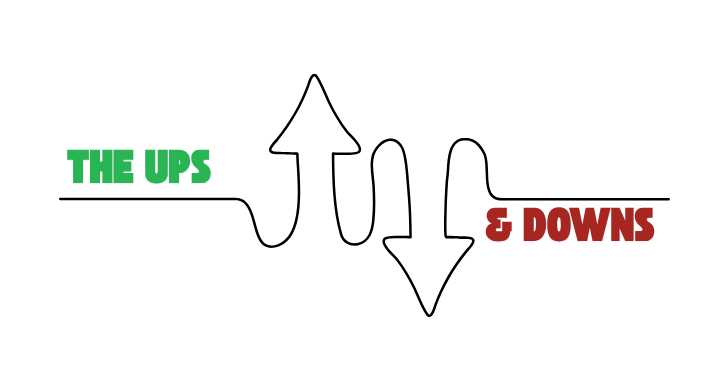Emily Reid
I help people reduce and control their tics and take control of their anxiety.
Learn More →
TIC THERAPY
anxiety therapy
Resources
Understanding Tic Patterns and Triggers
October 1, 2025
Tics—sudden, involuntary movements or vocalizations—can be unpredictable, but they rarely occur without a pattern. For those living with conditions like Tourette Syndrome or chronic tic disorders, the ebb and flow of tics are often tied to a web of environmental, emotional, cognitive, and physical factors. While it may appear that tics occur randomly, it’s possible to understand rhythm: a rise and fall in frequency and intensity that’s closely linked to what’s happening both inside and outside the body.

Environmental Triggers: The Context Matters
Tics are highly sensitive to surroundings. Quiet, calm spaces may reduce tic frequency for some, while others experience a spike in tics due to the silence itself, which can increase self-awareness (internal focus on the tics) and general anxiety. Conversely, stimulating or chaotic environments (e.g., crowded rooms, bright lights, or loud sounds) often lead to a noticeable increase in tics due to sensory overload.
For example:
- School or work settings may cause an increase in tics due to pressure to conform (social pressure) or suppress symptoms.
- Home environments, which may feel safer or more familiar, might lead to a release of suppressed tics—sometimes called a “tic rebound,” but I often refer to it as a “tic explosion” due to the increased intensity of tics after suppression.
- Social settings can go either way. Some people suppress tics in front of others, only to have a flare-up later. Others find tics increase in the presence of anxiety, judgment, or excitement. However, some people become less focused on themselves in social setting and more focused on the moment around them which might decrease tics.
Cognitive and Emotional Patterns: Thoughts as Triggers
Tics are deeply connected to internal emotional and mental states. Stress, anxiety, excitement, and even anticipation can all contribute to tic escalation.
Some key patterns:
- Anticipatory anxiety (“I hope I don’t tic right now”) often leads to more tics.
- Negative self-talk or fear of judgment can become a self-reinforcing loop—tics increase, leading to more anxiety, which in turn causes more tics.
- On the other hand, calming thoughts, mindfulness, or engaging in enjoyable mental tasks (intentional focus) may help reduce tic frequency temporarily.
The Role of Attention: Focus Can Make or Break the Cycle
Here’s a paradox: the more someone focuses on their tics, the more likely they are to occur.
- Hyper-awareness of the body or trying too hard to suppress a tic can lead to a buildup of tension, eventually causing the tic to burst out more intensely (tic explosion).
- When a person’s attention is diverted, especially during absorbing tasks or “flow” states (like sports, playing music, or engaging deeply in conversation), tics often decrease or disappear entirely for a time.
- Some individuals can even “delay” their tics by consciously shifting their focus, only to experience a rebound once that focus wanes.
Intentional Physical Movement: A Complicated Relationship
Physical activity is often seen as helpful for managing tics—but the relationship between movement and tics is nuanced.
- Repetitive, rhythmic movement (like running, dancing, swimming, football, basketball, etc.) can suppress or “override” tics temporarily, possibly because the brain is engaged in structured motor output. The key understanding here is that the tics usually do not occuring during the physical movement, but may be observed in a brief pause of the physical activity (water break, listening to coach, pause in the game, walking to the sidelines, etc.)
- However, certain types of movement may accidentally trigger a tic if they feel similar to a premonitory urge (the uncomfortable sensation that precedes a tic).
Why Tics Can Look Different in School
Tics don’t always show up the same way in every setting. For many children, the school environment can either help reduce tics or make them more noticeable, depending on the structure, demands, and social pressures of the day.
Tics may decrease at school when:
- There is structure and routine that helps regulate the nervous system
- The child is focused or deeply interested in a subject or activity
- Predictable schedules reduce uncertainty and stress
- Concentration channels energy away from tic expression
Tics may increase at school when:
- Anxiety or stress levels are high
- Learning differences make schoolwork harder to understand
- The child feels bored or disinterested in lessons
- Social pressure arises from not wanting others to see their tics or feeling they may disturb the class
- Sensory overload happens due to noise, lights, or crowded spaces
- Long periods of being sedentary make the body restless
Recognizing the Pattern to Gain Insight
Although gaining control over tics is typically the goal, recognizing patterns is the first step. It also helps increase knowledge and power over the tics because you understand them more. Each person may be different, so it can be helpful to observe to track tic symptoms if you’d like to gain more understanding of tic patterns.
Peace and Blessings,
Emily, OTR/L
Occupational Therapist
emily@three23therapy.com